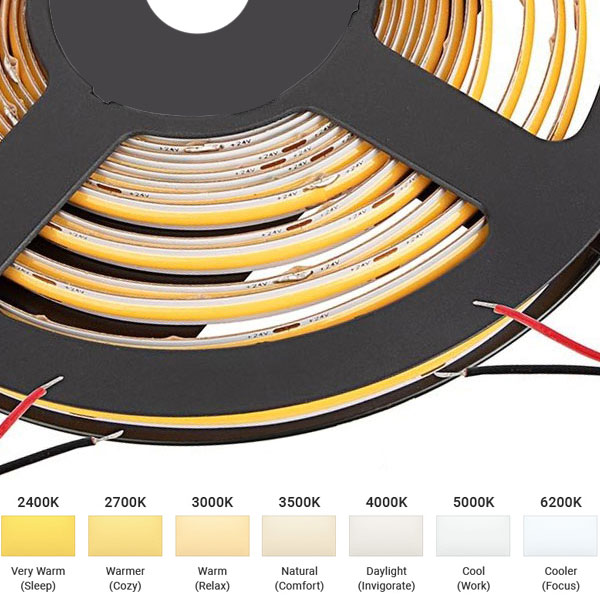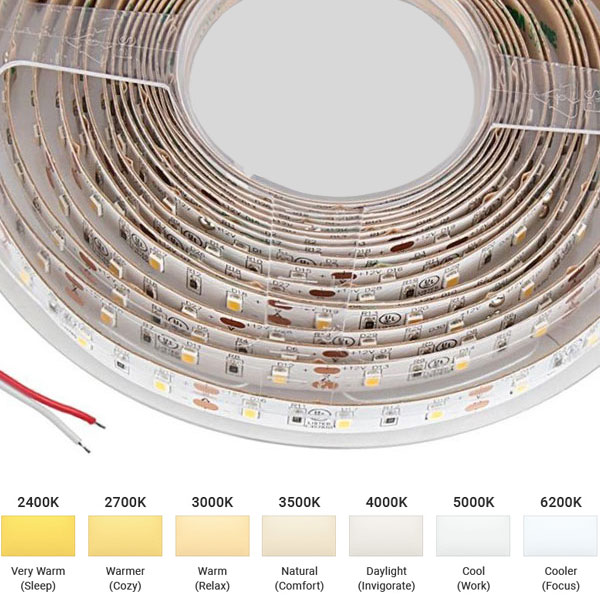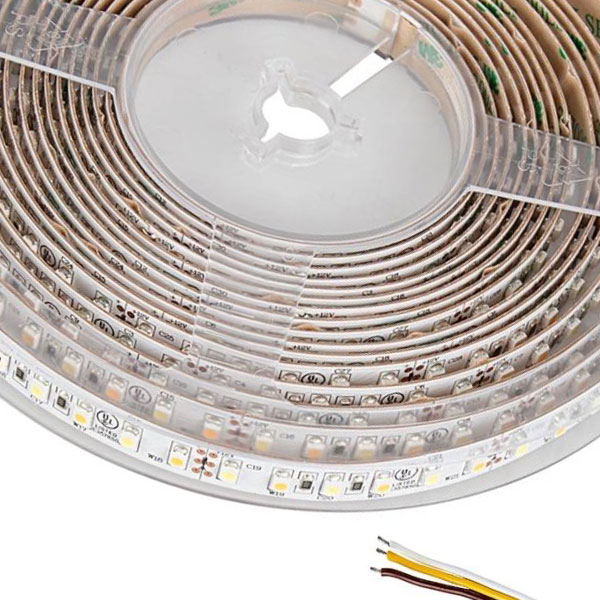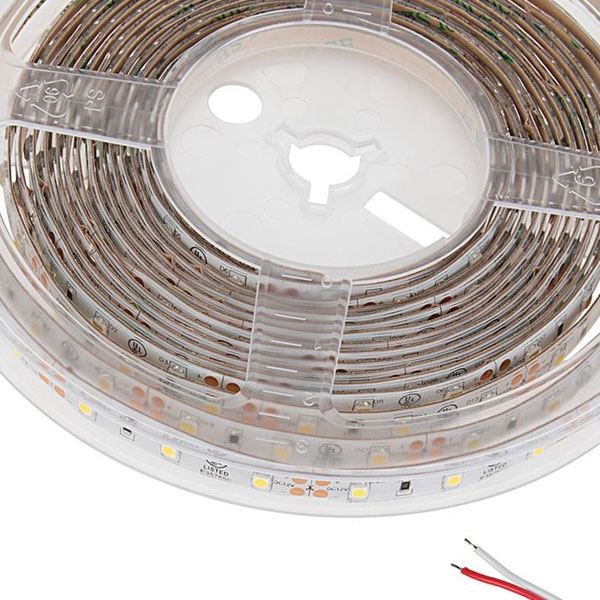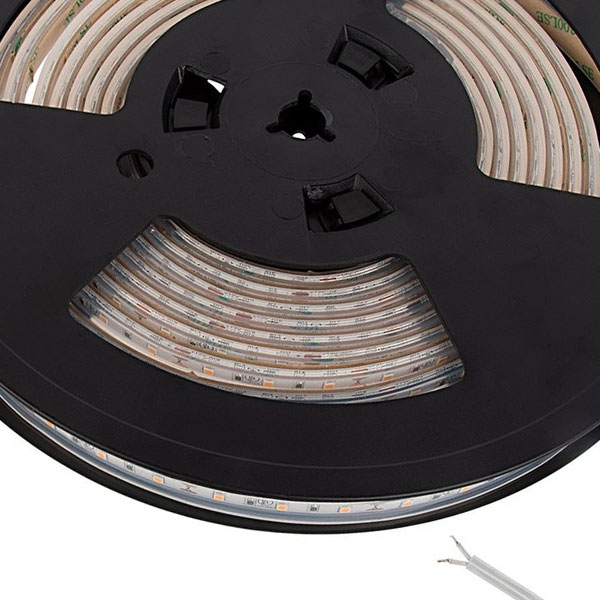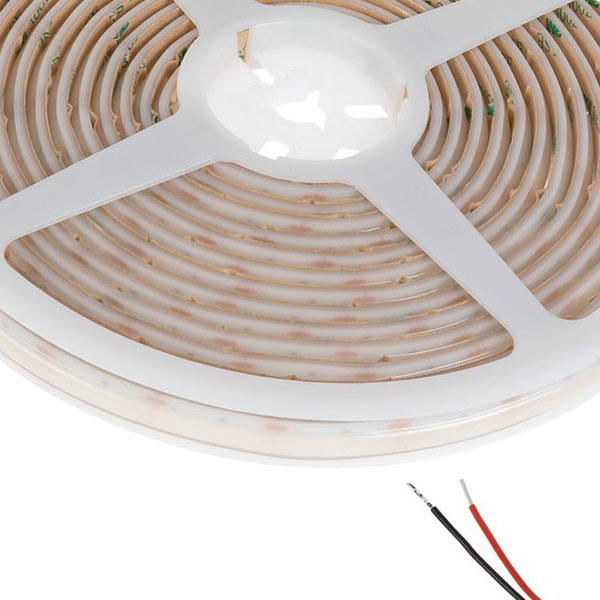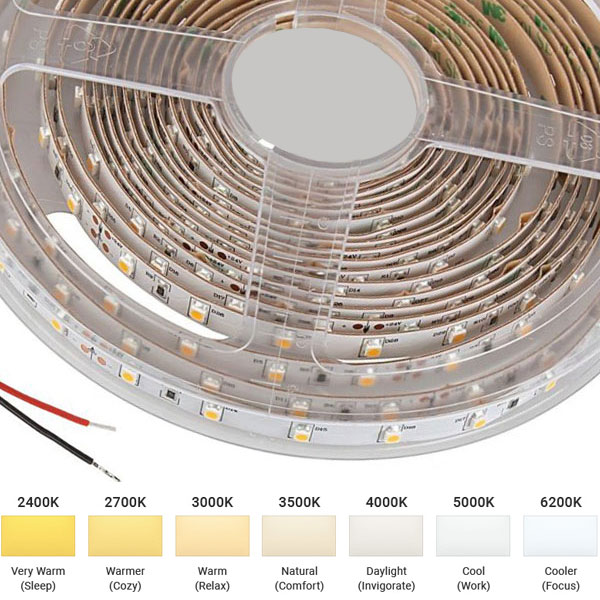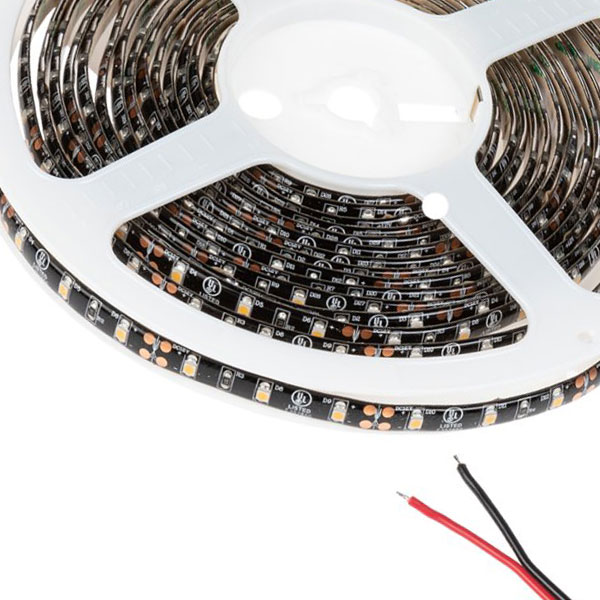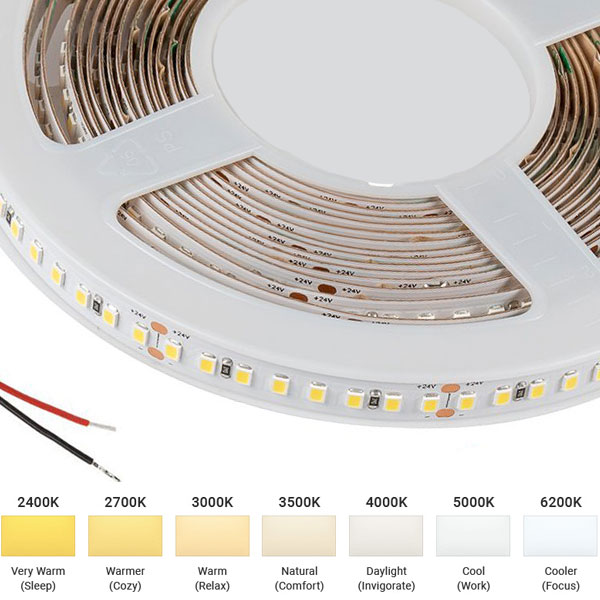LED Strip Lights
We feature a wide range of high-quality LED strip lights. These are the perfect solution for unique and beautiful lighting effects around a home or commercial space. Browse our selection of LED Strip lights to find the best fit for your application.
Our flexible LED light strips are available in numerous colour options, including white or single colours, RGB and RGB + CCT. Featuring commercial-grade Epistar LED chips and thick PCB boards, our LED tape lights are the perfect solution for your trade installations. They offer bright and intense colours that will cast an elegant light onto your space.
Energy-efficient dimmable LED tapes are easy to install. They can be mounted almost anywhere making them an excellent choice.
Our LED strip lights are fully dimmable making them a popular method for achieving a required mood or atmosphere. Create a warm and inviting aura with our Warm White LED strip lights. Or lively furniture backlighting with our RGB colour-changing LED light strips.
Whether you are looking for domestic LED strip lights or commercial LED strip lights. Indoor strips or outdoor strips, we will definitely have the perfect fit.
For more installation tips and advice, please speak to our technical sales team. Either by telephone, email or live chat on our website.
5m White COB Series LED Strip Light - High CRI - 12V / 24V - IP20 - 2200K-6500K - 196.9in (16.40ft) (sku:COB-IP20-90CRI-5m)
5m White LED Strip Light - Eco Series Tape Light - 12V / 24V - IP20 (sku:EC-IP20-80CRI-5m)
5m White LED Strip Light - HighLight Series Tape Light - 12V / 24V - IP20 (sku:HL-IP20-80CRI-5m)
5m Tunable White LED Strip Light - LED Tape Light - 12V / 24V - IP20 (sku:DC-IP20-CCT-5m)
5m White COB Series LED Strip Light - High CRI - 24V - IP20 - 2700K-5000K - 196.9in (16.40ft) (sku:COB2-IP20-90CRI-5m)
5m White LED Strip Light - HighLight Series Tape Light - 12V / 24V - IP67 Waterproof (sku:HL-IP67-90CRI-5m)
5m White LED Strip Light - Radiant Series LED Tape Light - 12V / 24V - IP20 (sku:RA-IP20-80CRI-5m)
5m White LED Strip Light - Lux Series LED Tape Light - High Density - High CRI - 24V - IP67 (sku:X-IP67-90CRI-5m)
30m White LED Strip Light - Eco Series Tape Light - Contractor Reel - 24V - IP20 (sku:EC-IP20-80CRI-30m)
5m Single Color LED Black PCB Strip Light - Eco Series Tape Light - Dimmable - 12V - IP64 - 3000K / 4000K / 6500K (sku:EC-IP64-80CRI-5m-BK)
5m Ultra-high 97 CRI LED Strip Light - Lux Tape Light - 24V - Up to 768 lm/ft - Single White - 2700K / 3000K / 3500K / 4000K / 5000K / 6500K (sku:LX-IP20-97CRI-5m)
What Are LED Strip Lights?
Flexible LED strip lights are thin circuit boards that house a series of small LED chips. You’ll also hear these lights referred to as LED strip lighting, LED tape lights, or LED ribbon lights. Strip lights come in a variety of different chip types, widths, lengths, and outputs. They typically have adhesive tape on the back for easy installation. Depending on the type of strip you have, you can change the color, CCT, brightness, or mode when paired with a compatible controller or dimmer.
LED strip lights are commonly used for under-cabinet lighting, backlighting, display case lighting, accent lighting, bar lighting, landscape lighting, and vehicle lighting. Strips can be cut at indicated cut marks, meaning they fit almost anywhere and are customizable for any project.
Keep in mind that LED strip lights are different from linear light bars, the latter being inflexible and unable to be cut or customized.
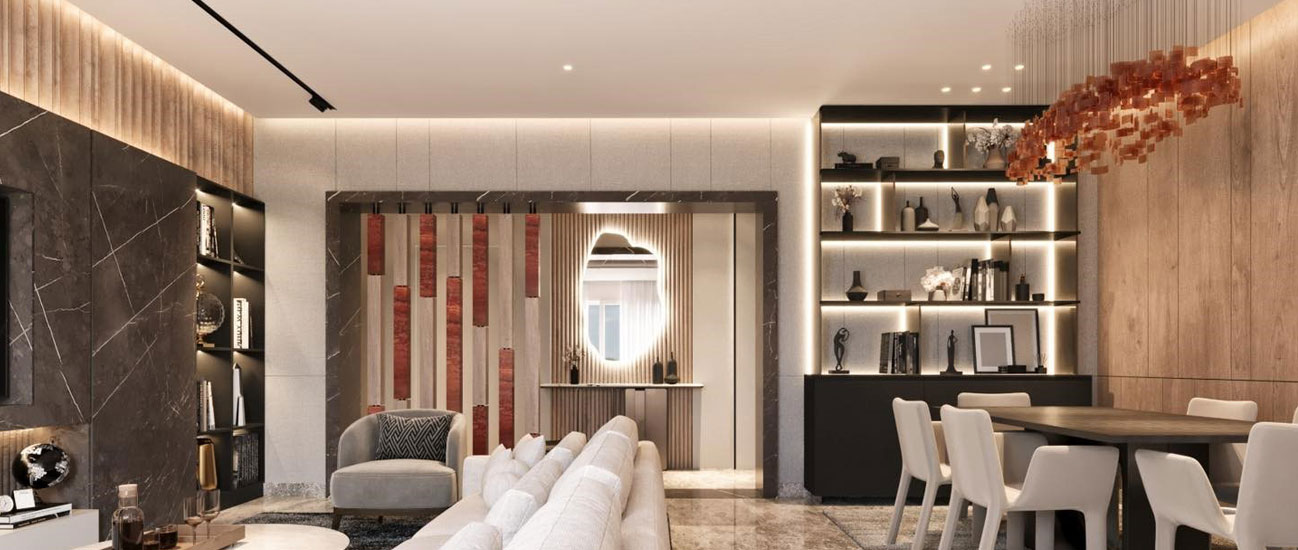
Types of LED Strip Lights
SMD Strip Lights
One popular type of strip light is the SMD (surface-mounted device) LED. In an SMD LED light strip, a series of chips are mounted and fused onto the circuit board with space in between each chip. Chip types are designated by their size in millimeters, with the most common being 2830, 3528, and 5050.
These strips are bendable, versatile, and customizable. SMD LEDs can be cut or soldered together to fit the exact length you need.
COB Strip Lights
Another option is COB (chip on board) strips, sometimes called dotless or spotless strip lights. In a COB strip, the individual light chips are placed closely together and covered with a phosphor diffuser over the top to make an even, continuous glow. The strip remains flexible which allows it to be applied on rounded or sharp application areas. Like standard SMD strips, COB LED strips can be cut at designated marks or soldered together.
COB strip lights are especially useful when you cannot hide the strip behind anything and you don’t want the individual LED chips to be visible. They can also reduce hotspots if you place these lights close to highly reflective surfaces.
Black PCB Strips
Black PCB strip lights function like regular SMD strip lights, the only difference being that the printed circuit board is black, not the traditional white. This makes these strips ideal for applications on dark surfaces where you want your strip to blend in.
Multi-Row Strips
Multi-row LED strips are LED strips with 2+ rows of chips mounted on a single circuit board. These strips are great if you want a larger light source with all the flexibility of a strip light.
Side-Emitting Strips
Unlike a traditional LED strip that emits light upwards, a side-emitting LED strip emits light to one side through a perpendicular-mounted chip. These are designed to be installed on flat surfaces without showing the strip.
Color Options
Static White or Single-Color
Know exactly what color you want to display? Single-color and single CCT strips contain one type of LED chip for a particular color or color temperature.
Tunable White
Tunable white LED strips change correlated color temperature (CCT) with the help of a remote or compatible app for increased variability. Adjust different CCTs, ranging from a warm 3000K to a cool 6500K.
Color Changing
Color changing LED strips are perfect if you want to change your lighting color on the fly. These strips come in several options: RGB, RGB+W, or RGB + Tunable White.
Color Chasing
A color-chasing LED strip, also referred to as addressable or ARGB, is a great option for those wanting a more exciting light experience. With multiple modes, sequence length, and chase speed, these are perfect for light shows.
Indoor and Outdoor Strips
Strips are classified as non-weatherproof, weatherproof, or waterproof. The type of strip you need is determined by the environment where your strips will be installed. Each strip has an IP rating indicating the size of solids and the pressure of liquids a strip can resist.
Indoor strips have a rating lower than IP64 and are not intended for locations where they could be exposed to water. Common indoor LED strip light installations include under-cabinet lighting, above-cabinet lighting, pantry lighting, cupboard lighting, bookshelf lighting, cove lighting, and bias lighting. You can make indoor strip lights waterproof with aluminum channels and proper weatherproofing accessories.
Outdoor strips are rated IP64 and above. They’re designed for a variety of applications, such as landscapes, vehicles, motorcycles, decks, walkways, patios, gazebos, and railings. Submersible, underwater strips must be IP67 or above to protect internal components from water damage.
Density, Voltage, and Other Important Characteristics
Density
Depending on how continuous you want your light to look, choose from low, standard (medium), or high-density LED strip lights. Strip light density can be found by looking at the LEDs per foot, with high-density strips having more LED chips per foot and low-density strips having fewer. Since lower-density strips have more space between each light chip, they emit less light but require less power to run. COB strip lights have the highest density of any strip light type.
Brightness
The total brightness of an LED strip light, measured in Lumens per foot (lm/ft), depends on two main factors: chip density and power draw. Strips with a higher density of LED chips will appear brighter than a lower density strip pulling the same amount of power. However, a lower-density strip can appear to have a similar brightness as a high-density strip if it uses a higher wattage per foot.
CRI and TLCI
CRI (Color Rendering Index) indicates how accurately an artificial light source reveals an object's true colors compared to natural daylight. The closer a light’s CRI is to 100, the better the color rendition. High-CRI strip lights are great for retail shops, jewelry cases, supermarkets, food and meat cases, museums, galleries, and other applications where accurate color rendering is critical.
Similar to CRI, the TLCI (Television Lighting Consistency Index) measures how accurately a camera is able to interpret colors under an artificial light source. This is especially important for videography and photography applications.
Length
Before selecting your strip lights, you must first determine how long of a strip you need. Measure the length of all areas where you will install your strip lighting and add up the total length. LED strip lights are most commonly available in set lengths, but select styles are available in custom lengths. Once you have the total length of strip lights you need, you must figure out the maximum run of your strip.
Max run is the maximum length a strip light can extend from a single power source without experiencing an excessive voltage drop. Voltage drop occurs when a circuit gets so long that the voltage at the end farthest from the power source is not strong enough to push enough power down the strip. The result is that LED chips at the end of the circuit get dimmer than those at the beginning of the circuit.
Many factors can affect the max run of your LED strips. If your strip lights have a higher light density, such as a COB strip, then the max run will be lower since there are more components causing the voltage to lower. On the other hand, strips with a higher voltage, such as 24V, will have a longer max run because there is a lower current draw.
How to Avoid Voltage Drop:
There are several ways to avoid excessive voltage drop.
1.To double the length of the max run, connect power from both ends of the strip light.
2.Power multiple runs by wiring each additional section back to the power supply instead of the previous strip. After you’ve wired your next section to the power supply, you won’t need to run back to power again until you’ve reached the maximum run for the new section.
a.For example, if you need a continuous 49-foot run of strip lights for a project and your strip light has a maximum run of 16 3/8 feet, you must wire the strip back to power twice after your initial connection—once for every 16 3/8 feet of strip lighting. Make sure your power supply is rated to support the amount of power the strips will draw. Do this by looking at the amp or wattage rating. You can either run the wire from each strip to the power supply or controller, or you could use one run of a higher gauge wire and splice each strip into it using a “T” Tap Wire Splice Connector.
3.Another option to avoid voltage drop is to install an LED amplifier between the maximum runs of strips. These devices amplify power from the end of one strip to the beginning of the next to avoid any power loss and extend the maximum run of LED strip lights. See examples of how to use an amplifier in our cove lighting and pool lighting articles.
Voltage
Your strip light’s voltage will depend on your specific application and where you want to install it. Strip lights are available in 12V AC, 12V DC, 24V DC, 36V DC, 48V DC, and 120V AC, with 12V strips being the most popular. AC (alternating current) strips are typically used for landscaping applications or when the strip is hooked up directly to the mains. 120V strips are usually exclusively used in commercial applications.
Strips with a higher voltage typically have a longer maximum run. Whichever voltage you choose, you will need a power supply that matches the voltage of your strip light.
What You'll Need to Complete Your Strip Light Installation
To determine the power supply you need, you must know the total length of strip lights you need, your strip light’s voltage, and the watts consumed per foot. Then, use our power supply calculator or use the equation explained below.
The total wattage of your LED strip lighting must be at least 20 percent less than the power supply's rated wattage. For example, if your LED strip light requires 80 watts of power to run, you'll need a power supply rated for at least 96 watts.
Take the length of your LED strip in feet, multiply it by the watts consumed per foot, and then multiply by 1.2.
This will give you the minimum-sized power supply you’ll need to run your strips. Because power supplies are available in a variety of wattages, take the number you came up with and find the closest power supply that is rated for a wattage higher than that number.







